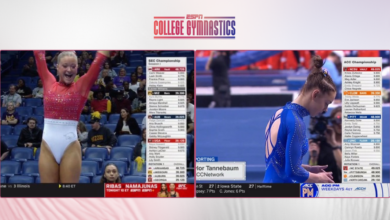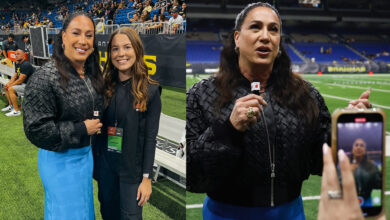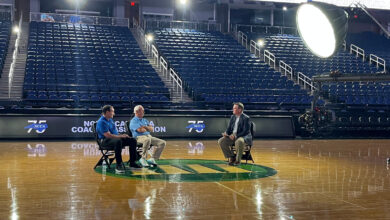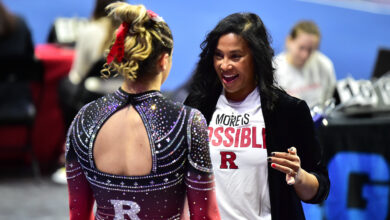Winter X: Iraq war veteran shares his journey to becoming star athlete
This weekend during ESPN and ABC’s coverage of the Winter X Games, Brandon Adam will be aiming for a gold medal in the Mono Ski competition.
In May 2007, he lost his legs in Iraq when he encountered an IED — an improvised explosive device — on patrol with his Army unit.
Adam soon began competing in the sport of Mono Ski. In the 2011 Winter X Games, the Sandpoint, Idaho native earned a silver medal.
Adam shared his story with ESPN feature producer Kory Kozak. Adam explains what it was like joining the army after September 11, participating in two tours in Iraq, losing his legs, and then discovering a new career and family.
The edited piece is scheduled to air Sunday, the day the Mono Skier X Final is scheduled to air on ESPN, ESPN3 and ESPN3D at 6:45 ET.
Above, Front Row has the exclusive “director’s cut” 11-minute version of Adam’s story, courtesy of Kozak and post production editor Carl Wiser.
Below, Kozak — a 16-year ESPN veteran, six-time Emmy Award winner and former Rutgers defensive end — tells Front Row how this feature came to be.
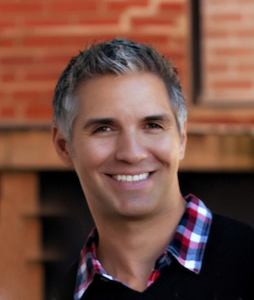
FR: How did you come across Brandon Adam’s story?
KK: It was brought to my attention by Valerie Gordon of the Feature Unit and Esther Van Huystee from X Games. I thought it was a great story to tell and was excited to do it. When you have the chance to tell a war hero’s story, you should do it.
FR: Even with this 11-minute version, how hard was the edit?
KK: The story we edited for X Games only runs about three minutes, so trying to do his story justice in that time was a challenge. I chose to let Brandon and his wife Shannon be the voices in this. It’s their story, so let’s let them tell it. In the 11-minute version, it’s a much more raw conversation with Brandon and we were able to get into more detail and allow Brandon to talk more about what he went through. The biggest issue we were going to have in the three-minute piece was covering the Iraq portion and most importantly, the moment when Brandon was involved with the explosion.
FR: Where did you film this story, including his monologue and family time? How did you film the skiing action on the slopes?
KK: We shot the story in and around Colorado Springs and the skiing footage was at Copper Mountain. For Brandon’s interview, we used a 25-by-18-foot American flag for a background, so we needed to shoot in room with a great deal of space and high ceilings. I found a ballroom at the Marriott Hotel in Colorado Springs that allowed for us to have that space. At Copper Mountain, we shot with three cameras — the Phantom (high speed), the Canon 5D and with GoPros. The Phantom allowed us to get great super slomo action shots where the snow almost becomes a character in the shot because you see every flake and crystal. The 5D allowed us mobility since its such a small camera, it was easier to transport around the slopes with it. The GoPros — we were able to stick those to the skis and allow to see what Brandon sees when he skis and jumps, plus we turned them around so you could see his face and get a sense of how hard Mono Skiing is on his body because of his facial expressions.
FR: He said that his first X Games was very painful. He finished second in Mono Ski in Winter X 2011. Was he referring to physical pain or disappointment with not winning?
KK: Both. Brandon wants to win. Even though he is very new to Mono Skiing, he expects to win, but that’s not to say he didn’t love winning a silver at the X Games. Physically, the sport is very draining and the impact he feels in his Mono Ski is like what a football player goes through every play. His back absorbs major pounding every time he skis, which has led Brandon to train at LifeQuest in Colorado Springs. They work with men and women who have served in the armed forces and want to get back to living their lives like they did before.
FR: Name your favorite assignments at ESPN thus far.
KK: Wow. That’s tough. My favorite story I have told so far was a feature called The Finish Line. It’s a story I did with Tom Rinaldi about Jim Tracy, a cross country coach in San Francisco who was diagnosed with ALS or Lou Gehrig’s disease. His team dedicated its season to him. When the team reached the state championship meet, everyone on the team did something extraordinary that day, from personal bests, to leading a race for the first time. Amazingly, their best runner, Holland Reynolds, who was a lock to finish in the top five, struggled due to dehydration and started to stagger with about a half mile left in the race. About 10 feet from the finish line, she collapsed. All Holland had to do was finish and the team was going to win the state title for Coach Tracy. Reynolds began to crawl and eventually made it across the line. It’s a great story of a team’s love for its coach and the importance of Jim Tracy on the lives of these young women.
